Context
Within the framework of the European Erasmus+ CoLab Europe project about the future of rural coworking in Europe, the national workshop in Spain took place at the City Council’s Espacio Joven Aranda in Aranda de Duero (Spain), on April 25, 2025, under the form of a futures thinking workshop for young people to imagine and visualize the Aranda they want come 2050. It was organized by Ribering, the coworking space run by the project’s local partner –NBSCLIMATE-, with support from Aranda de Duero’s City Council.
Objectives
As discussed during the EU Rural Coworking Forum 2024 (the project’s international training in Spain) last November, a key role of rural coworking spaces is to engage civil society in the Rural Revolution, that is the revitalization of rural areas by attracting and retaining talent in vibrant communities. One particular social group that needs to be specifically targeted is young people, especially in the 18-30+ age range, which is when they usually leave town to study and/or work and rarely return.
To this end, inspired by Trevessu and Aurora Coworking (the project’s partner in Italy), Ribering we decided to join forces with our City Council in Aranda, so as to leverage a highly successful initiative providing a space (“Espacio Aranda Joven”), facilitation by the Aranda Alternativa team and guest organizations, and leisure and cultural activities for young people on the weekend’s afternoons and evenings. We knew the initiative was gathering a good 4-500 young people from 12 to 25+ years of age every weekend, so it was only natural to partner with the City Council again (a key stakeholder of ours) to reach out and engage this otherwise elusive audience.
Our goal was simple, to create the conditions for these young people to collectively imagine the city they want to see in 2050, and then the steps to get there, including their own contributions, hopefully making them realize by themselves that they can indeed be an integral part in building that future, thus gaining a sense of empowerment.
Methodology
We leveraged the well-proven Futures Thinking methodology to guide participants, split in groups, along a journey of imagination and self discovery. It encompasses four main steps:
- Imagine the future you want to see happening at a certain point in the long-term future, say 2050 in our case. The picture of the future has to be as concrete and specific as possible, depicting the most important things for them, especially but not only in the public sphere.
- Come back to the present and identify the “green signs” that point to that future in the present moment, in the form of projects, initiatives or best practices.
- Next, think about ways in which those green signs can blossom into the future they want, that is the bridge between the present (2) and the future (1). These can take the shape of incentives/penalizations from a political, economic or social perspective.
- And lastly, put forth specific commitments they can make to participate in that transition (3), taking into account the principle of shared but differentiated responsibility, each according to his or her capacity.
In practice, we split participants in teams of 4-6 people, each working on a separate table, and reflecting their ideas on an A3 sheet, in written form and/or as a drawing. And then, they will present their work to their peers, either via a single speaker or various.
Results
Although the young people that come to this space regularly are somewhat used to participating in workshops, it is never easy to engage them unless the activity’s dynamics is as fun as the other leisure options at their disposal (TV, billiards, table tennis…) Yet, we managed to engage more than 15 people, and have them working in 3 teams. For the final presentations the entire group (more than 40 people) listened to their peers, hopefully grasping some of the messages passed.
As a picture speaks louder than a thousand words, so here are the results:
Team 1:
Future: they would like the former sugar factory (“Azucarera”) to become a shopping mall and/or a museum. They want more soccer fields, museums, swimming pools, sport centers, bigger parks, and skateboard lanes and skate parks (more and bigger). Interestingly, they mention “less fights” indicating that there are perhaps a few in their neighborhood. Also, they’d like to spend less time in school, and have their own space for young people quite like this one. Unfortunately, they also mention more fast-food places. And in general they’d like to see their city grow.
Present: they like the museum of popular games, the swimming pool in La Calabaza residential area, and Santiago Manguan Sport Center (formerly known as the Principe de Asturias). They insist on the bigger soccer fields, and point out that there are no small shops in their neighborhood.
Transition: being specific, they demand a better public transport system with: hydrogen fuel cell buses, electric or hybrid buses, more bus tops (including in small towns nearby, and in their neighborhood “Las Tenerías”), urban night buses, and rechargeable bus passes. More small shops, and more parks, one in particular between the railway line and San Gil’s old threshing floors with a skate park.
Picture: among the notable highlights, there are many trees and animals (birds and dogs), small shops, skate parks, bars, sustainable buses, separated lanes (for cars, bikes and pedestrians), but also pollution as smoke coming out of houses and cars alike.
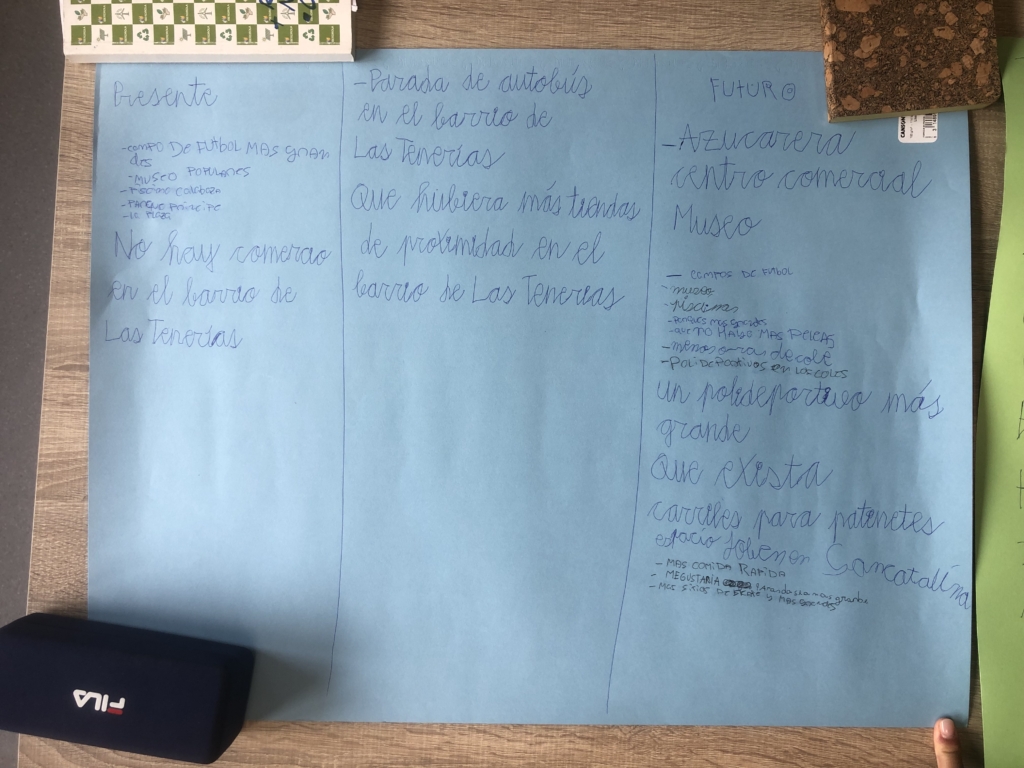
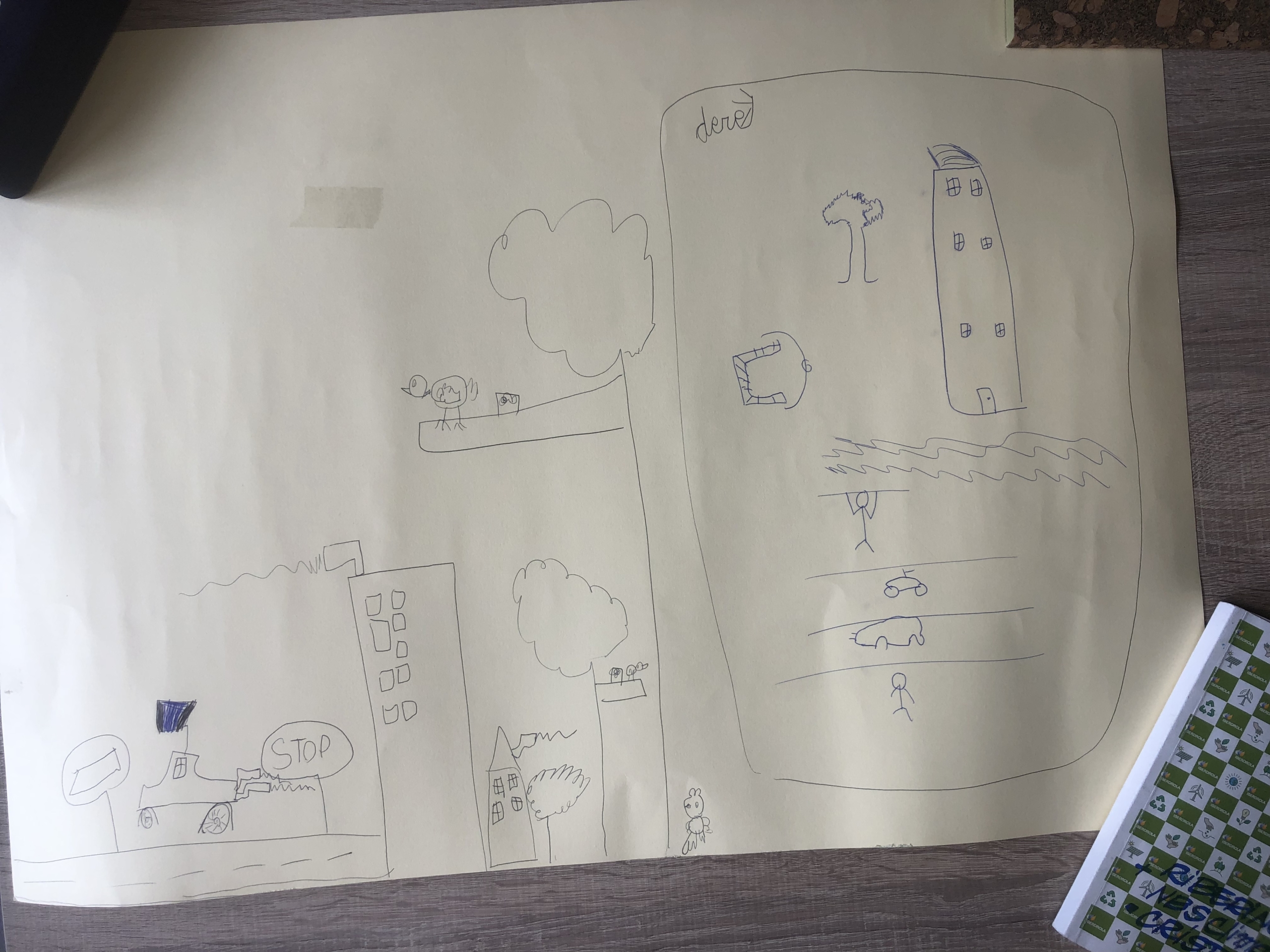
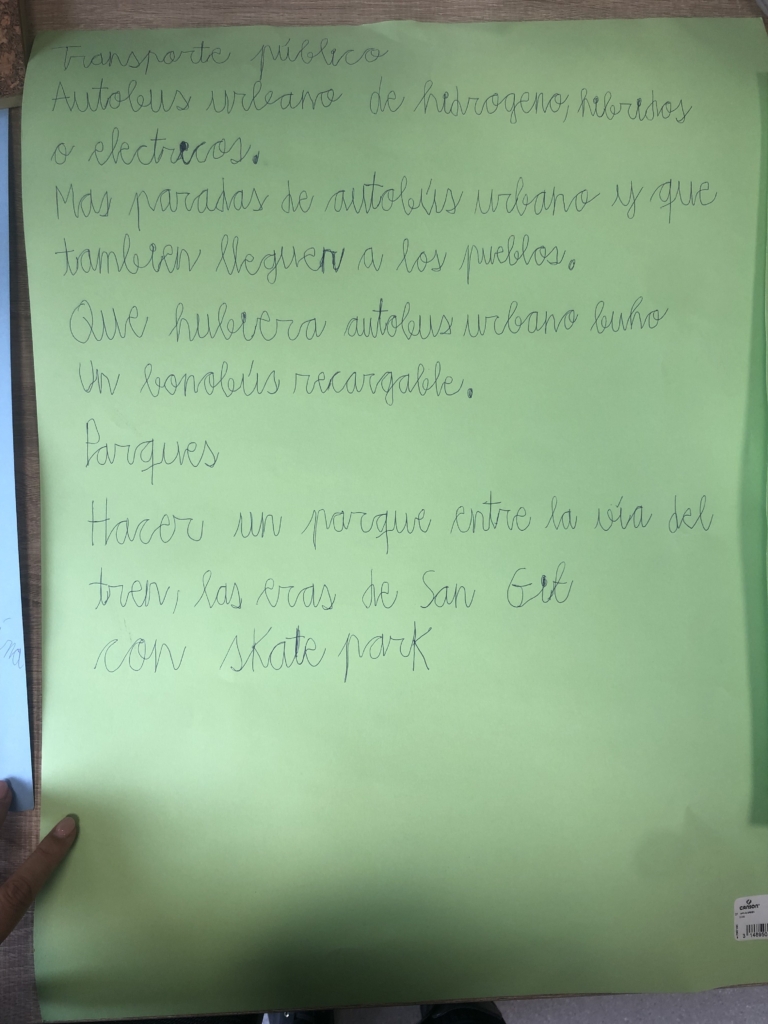
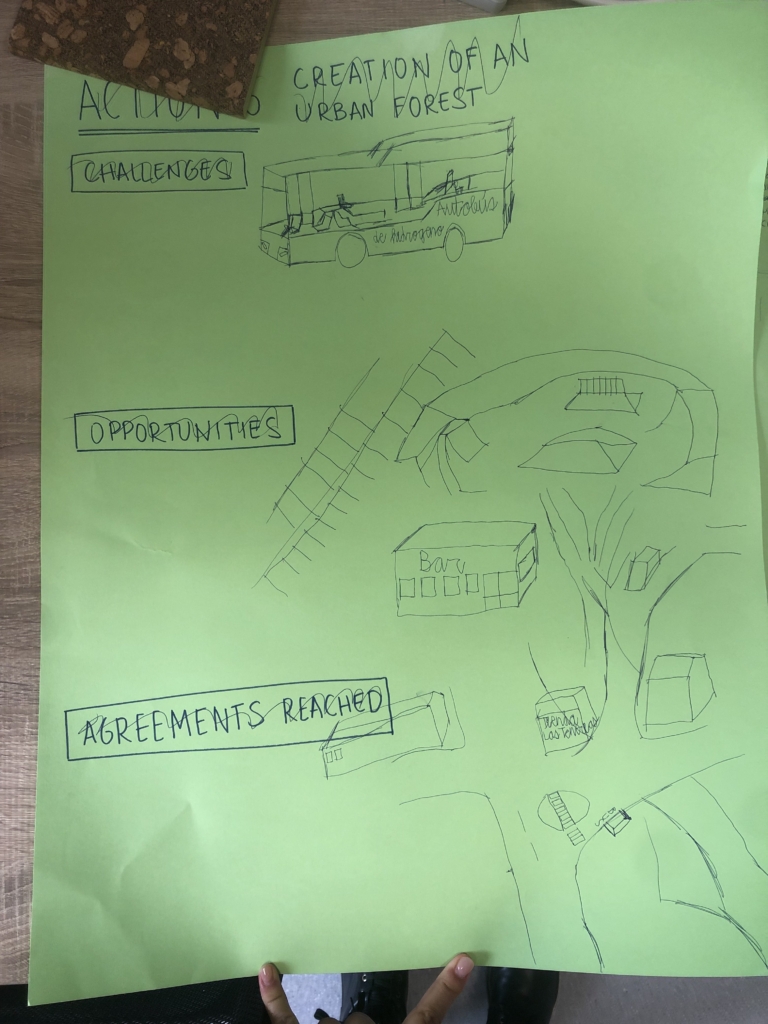
Team 2:
Future: they want to see a future with more green areas (including a botanic garden, a zoo, and a large park like “El Retiro” in Madrid), shopping malls, with less construction work, more fountains to drink, more kids-friendly parks, more renewable energy, zip lines, leisure centers, a swimming club, a photocall, a bowling alley, a theme park, a water park, more clothing stores, a closer movie theater (the current one is in the outskirts of the city, very far away from the center), public restrooms, a nightclub for kids from 12 to 15 (this is needed now in 2025!) And also, they want to see ducklings!
Present: they like many things of today’s Aranda, including: las Francesas (the building where this Espacio Joven Aranda is located), el Barriles (a “beach bar” by the river Duero), Mercadona (a large supermarket chain), el action (no idea what it is!), los Jardines de Don Diego (the square right at the city center), La Calabaza swimming pool, El Sandoval (high school, especially its cafeteria), El Castilla (primary school), El Santa Catalina (primary school), lamb (typical local dish), pork ham, omelette sandwich (especially from El Sandoval’s cafeteria), El Kikos (candy store), their friends, Aranda’s annual festivities (“Las Fiestas de Aranda”) and its fair, La torta de Aranda (the typical local bread), El Villa de Aranda (local handball club), the chinese bazar in the main square (including the chinese boy at the counter), the chinese bazar on Carre Quemada street, Diana’s calimocho (a drink mixing red wine and coke), wine, El Josfe (bar), the City’s cleaning services, the movie theater, the ducks at El Barriles (beach bar and park by the river).
Transition: being specific they demand less cars, less construction work, less schools/high schools and less school hours, and more trees.
Picture: once again, there are many trees and animals (birds/ducks) appear, actually as part of a botanical garden. Also their favorite bar (El Josfe), a big shopping mall comprising some classic fast-fashion brands they like (Primark, Zara, Bershka, Tiger and Ale-hop), a youth nightclub, and a theme park.
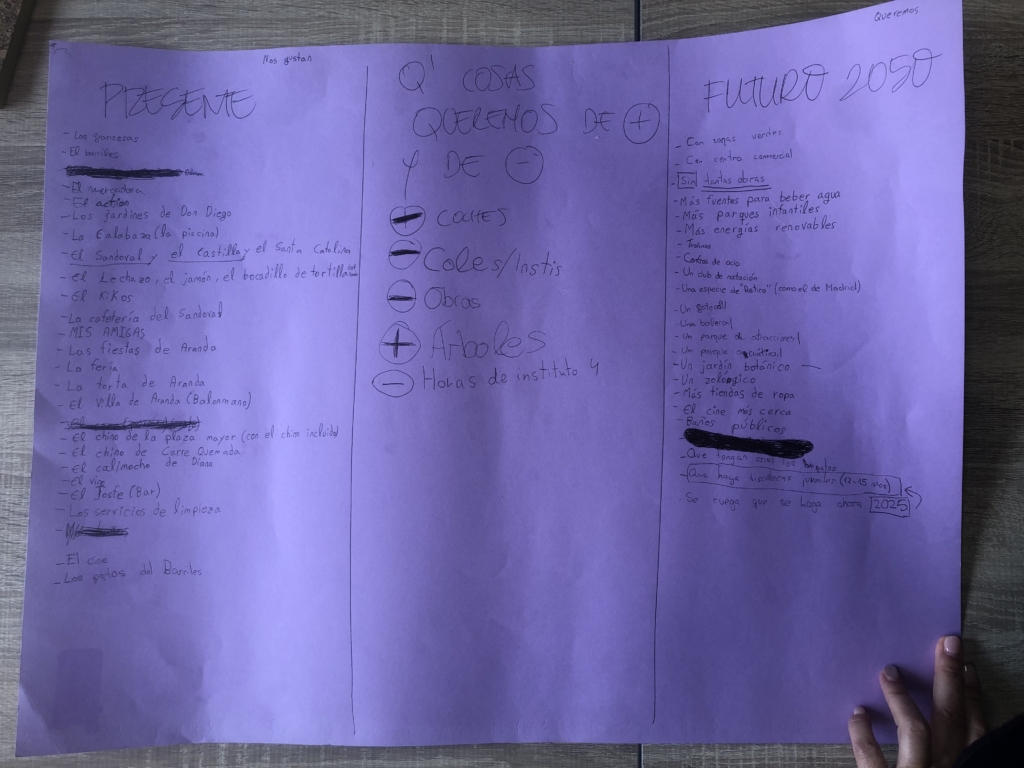
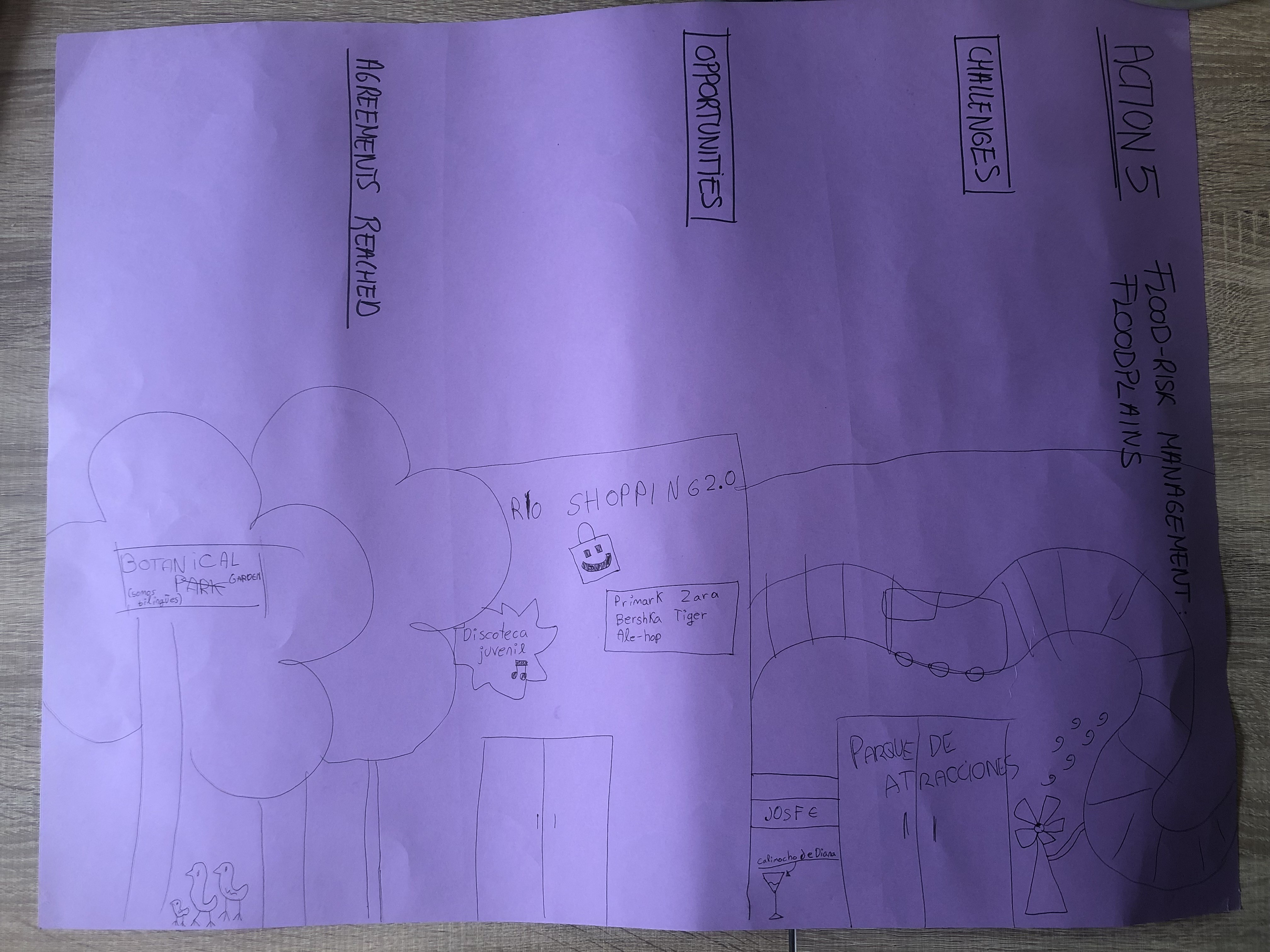
Team 3:
Future: they imagine a post-apocalyptic future where a virus has infected a large part of the human and animal population in Aranda, turning people into killer mutants. High schools were used as bunkers, like some small villages where privileged people took shelter and prevented others from entering.
Present: they mention that there is too much pollution, some people are stupid, streets are dirty, and there is war (supposedly they mean on a global scale). Regarding what they like: parks, McDonald’s and the movie theater.
Transition: they demand less isolated people and less people in general (to be confirmed), less buildings, and more nature.
Picture: it reflects the post-apocalyptic future depicted before, and with their high-schools turned into bunkers. Yet, they probably see themselves as cool, fashionable super heroes.
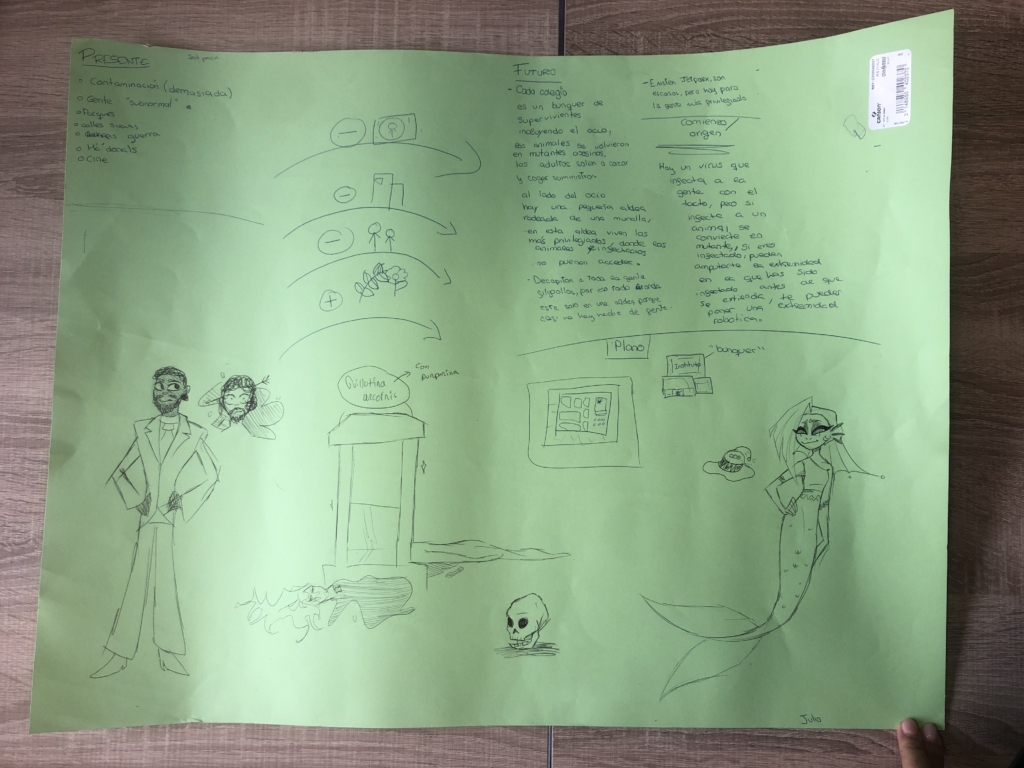
Conclusions
To sum up, partnering with the City Council to take advantage of their established and impactful “Aranda Espacio Joven” initiative for young people to have alternative leisure activities in a safe space, was undoubtedly a good decision that allowed us to reach this particular audience that so far had been hard to engage at Ribering Coworking. Participation in the workshop was moderately satisfactory, with about a third of all attendants actively joining the working teams. Yet, those who did it, were indeed quite appealed by this idea of imagining their own city in the future, and thus they showed interest. Also, they did work in teams, and fed on each other’s contributions, and respected each other’s voices. Although we did provide some inspiring examples of what is expected at each stage, perhaps pictures and videos of best practices in leading cities around the world would have sparked their imagination more effectively. Moreover, the methodology itself was a bit difficult for them to understand fully and hence they confused some terms and steps, implying a simplification is required, as well as further explanations and examples.
Along the same lines, maybe limiting the work to one or two particular aspects of public life (health, education, sports, culture/leisure, green areas…) per session would simplify the process, and allow them to focus more narrowly and come up with more concrete ideas.
On a different angle, encouraging more artistic ways of reflecting their ideas, like music or theater, could maybe be more appealing, and make room for those who are usually quiet when it comes to traditional communication means such as speaking, writing or drawing. This certainly deserves some exploring.
As per the contents generated, there are positive and negative aspects. For instance, the vast majority demand more nature in the city, more and bigger parks, as well as more leisure or sport-related centers or clubs. Many also want a better public transport system, and more small shops. On the negative side, some of the most destructive parts of our economy, like fast food or fast fashion, are integrated into their culture.
Lastly, the final presentations in front of the entire, larger group, encountered some difficulties, as some people from the non-participating group paid little attention or even disrespected their peers a bit. These could be countered in several ways: either having everyone participate mandatorily (which would be hard given its their free time), or simply have the working teams presenting to each other.
Overall, for us it was a great, and to some extent new, experience engaging with this young audience, definitely providing us with many lessons learned and ideas to improve next time.



